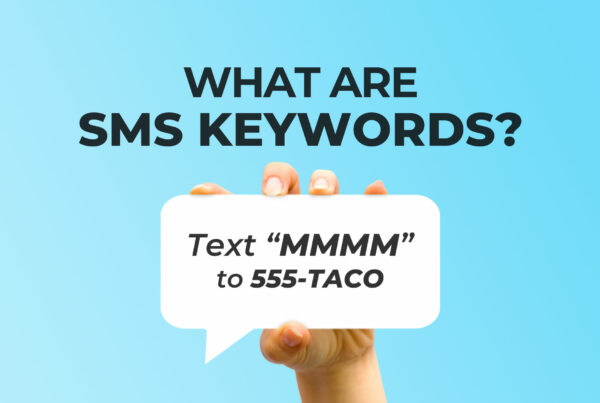When it comes to sending and receiving marketing text messages, successfully registering a 10DLC brand and campaign is essential. Without such, wireless carriers are increasingly less likely to deliver SMS messages to your intended recipients.
As we continue to learn about 10DLC and help our customers register their campaigns, we’ve encountered a common reason for rejection. A number of campaigns have been rejected because the business lacked a compliant privacy policy on their website.
We want to get your business text messaging and SMS marketing off the ground as seamlessly and efficiently as possible. We’ll share some of the fundamental components of a privacy policy to help ensure that your campaign is successfully registered. This can also help minimize any delays as you use String to supercharge your marketing efforts and boost customer engagement.
What Is A Privacy Policy And Why Do I Need It?
To put it simply, a privacy policy is a legal document posted on a company website that states the specific information you collect from your customers along with your methods of collection, storing, and sharing that information. And as it pertains to marketing communications via email and text messaging, it’s important to clearly state how one can unsubscribe from company communications.
According to CTIA (Cellular Telephone Industries Association) Messaging Principles and Best Practices:
Message Senders should maintain and conspicuously display a privacy policy that is easily accessed by the Consumer (e.g., through clearly labeled links) and that clearly describes how the Message Sender may collect, use, and share information from Consumers.
The core of 10DLC attempts to create an ecosystem that reduces scam and spam messages, with recipients only receiving SMS messages from verified and vetted brands and businesses. Only recipients who explicitly request to receive text message communications from your business receive them. Customers always have a clear understanding of how they can unsubscribe from these communications.
What Should Be Included In My Privacy Policy?
If you take some time to study the privacy policies of other companies you’ll see some common themes that will help you create the best one for your business. Here are some things to include:
The personal information you collect and use from your customers
This should include a list of every possible piece of personal information you collect from your customers and how it’s collected. This may include:
- Contact details (like name, email address, address, phone number, social media profile, etc.)
- Demographic information (like gender, age, country of origin, birthdate, etc.)
- Electronic identification data (like IP addresses and cookies)
- Correspondence between them and your brand (like emails, text messages, images and other messages)
How you will use that personal information
Again this will vary by business and you may have very specific uses for information collected from customers.
From a marketing standpoint, you will want to discuss how you use the collected information to market and sell your products or services to them.
Disclosure or sharing of personal information
Your customers want to ensure that their information is kept private and that their personal information will not be shared with third parties. This section specifically details where customer information will be shared including any third-party platforms.
You’ll most certainly want to disclose that you use String for text message communications and therefore some of the customer’s information will be stored in that platform – and be sure to link to the privacy policy for that third-party platform.
Process for unsubscribing from communications
For all marketing communications, specify exactly how people can be unsubscribed from these.
For text messaging you might say something like “If you wish to stop receiving text messages from us, reply STOP, QUIT, CANCEL, OPT-OUT, or UNSUBSCRIBE to any text message sent from us.”
Contact Information
Be sure to include a section detailing how people can get ahold of you if any concerns arise regarding customer privacy.
As you formulate your privacy policy, we can’t stress enough the importance of never sharing a customer mobile number with a third party. If this is mentioned in the privacy policy in any way, the campaign will be rejected.
Where Can I Find A Privacy Policy Template?
It can be a bit daunting to try and come up with a privacy policy from scratch. And your privacy policy should never be taken lightly. It’s never a bad idea to consult with a lawyer or legal service to ensure that nothing is missed.
That said, there are a couple of things you can do on your own to formulate a privacy policy for your business.
Observe What Other Companies Do
You can check the privacy policy of other companies, especially those in a similar industry to ensure you don’t miss something. Just for fun, here are the policies for the various ClearHello brands. (ClearHello is the parent company for String, FYI)
You’re certain to see some common themes and best practices to incorporate into your own.
Find A Template
With a quick search on the web, you can find a privacy policy template that can be easily customized to your brand. Here are a few that we found:
- Privacy Policy Template Generator
- Termly Privacy Policy Template
- LawDepot Free Website Privacy Policy
Regardless of your business, if you collect any customer information, you need to have a publicly-accessible privacy policy to communicate to your customers that their information is safe. And if you plan to use String to send text messages to wireless telephone numbers, a privacy policy is an essential first step.
As you prepare to register your 10DLC campaign, be sure to also check out our step-by-step guides for registering your brand and campaign and don’t hesitate to reach out to our customer support team for help.




